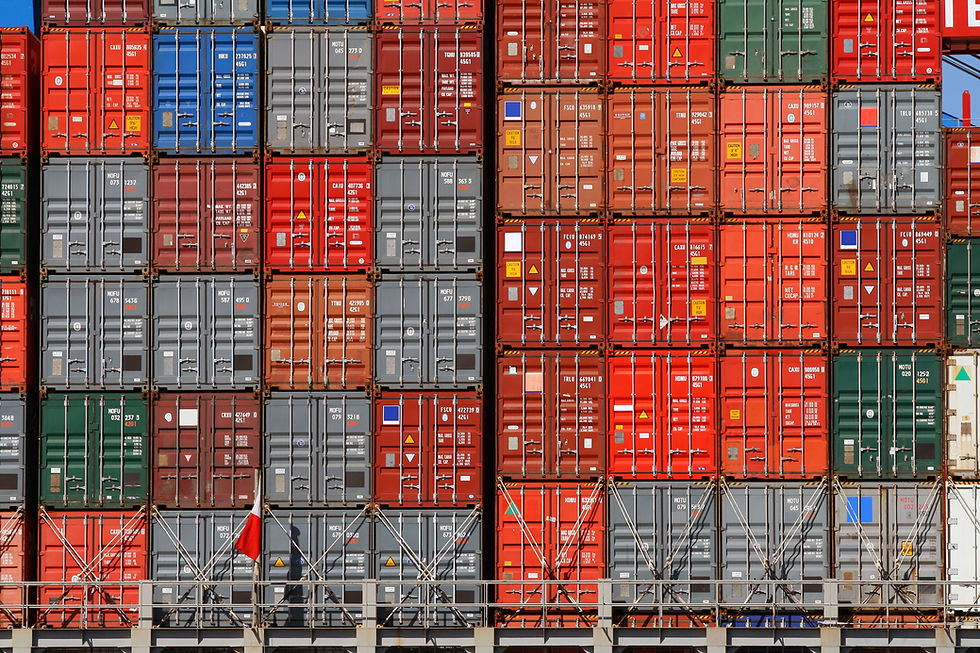China's Growing Trade with ASEAN and the Development of the Logistics Industry for Shipping
- CNXtrans

- Mar 3, 2023
- 3 min read
China has emerged as a major trading partner for ASEAN (Association of Southeast Asian Nations) countries. The two regions have established strong economic ties, with bilateral trade volumes increasing rapidly in recent years. This article will explore China's growing trade with ASEAN and the developments in the logistics industry for shipping from China to ASEAN countries.
Trade Relations between China and ASEAN
ASEAN countries are some of China's biggest trading partners. In 2020, the total bilateral trade volume between China and ASEAN reached 731.85 billion US dollars, accounting for over 14 percent of China's total foreign trade volume. In the same year, China's exports to ASEAN countries amounted to 481.81 billion US dollars, while its imports from ASEAN countries amounted to 250.04 billion US dollars.
China's exports to ASEAN countries mainly consist of machinery, electronic products, and textiles, while its imports from ASEAN countries mainly consist of agricultural products, minerals, and energy resources. With the signing of the Regional Comprehensive Economic Partnership (RCEP) in November 2020, which includes China and 14 other countries, including the 10 ASEAN member states, the trade relations between China and ASEAN are expected to further deepen.
Logistics Industry Development for Shipping
The development of the logistics industry has played a significant role in facilitating trade between China and ASEAN countries. With the increasing trade volume between the two regions, the demand for efficient and reliable logistics services has grown.
China has made significant investments in the development of transportation infrastructure and logistics facilities to support its growing trade with ASEAN countries. The construction of the China-ASEAN Free Trade Area (CAFTA) and the ASEAN-China Center has facilitated trade and investment between the two regions. The establishment of logistics parks, such as the Qinzhou Port Logistics Park, has also improved the efficiency of shipping from China to ASEAN countries.
In addition, the digitalization of logistics services has enabled faster and more efficient customs clearance and reduced the time and cost of shipping. E-commerce platforms such as Alibaba and JD.com have also provided a platform for small and medium-sized enterprises to sell their products to ASEAN countries.
Challenges and Opportunities
While the growth of trade between China and ASEAN countries presents opportunities for both regions, there are also challenges that need to be addressed. One major challenge is the infrastructure gap between the countries in the region. There are significant differences in infrastructure development between the more developed ASEAN countries, such as Singapore and Malaysia, and the less developed countries, such as Laos and Cambodia. This disparity can affect the efficiency and cost of logistics services and trade.
Another challenge is the increasing trade tensions between China and other countries, such as the United States. The ongoing trade disputes and geopolitical tensions can have an impact on the trade relations between China and ASEAN countries.
However, there are also opportunities for the development of the logistics industry and trade between China and ASEAN countries. With the increasing demand for e-commerce and digitalization of logistics services, there is potential for the development of cross-border e-commerce and supply chain services. Moreover, the Belt and Road Initiative (BRI) provides opportunities for the development of transportation infrastructure and logistics facilities, which could further enhance the efficiency and reliability of shipping from China to ASEAN countries.
Conclusion
China's growing trade with ASEAN countries has been driven by the increasing demand for goods and services, as well as the development of the logistics industry. The establishment of the CAFTA and the RCEP agreement are expected to further deepen the trade relations between China and ASEAN countries. The logistics industry development has played a significant role in facilitating trade between the two regions, with the digitalization of logistics services and the establishment of logistics parks improving the efficiency of shipping from China to ASEAN countries.
Despite challenges such as infrastructure gaps and increasing trade tensions, there are also opportunities for the development of the logistics industry and trade between China and ASEAN countries. Cross-border e-commerce and supply chain services have potential for growth, and the Belt and Road Initiative presents opportunities for the development of transportation infrastructure and logistics facilities.
Overall, the future of trade relations between China and ASEAN countries looks promising, and the continued development of the logistics industry will play a key role in facilitating this trade.
Need a China-based Shipping Agent to help you consolidate and ship internationally from China?





Comments